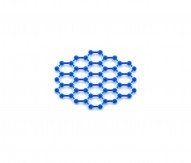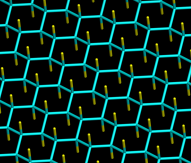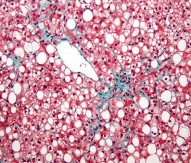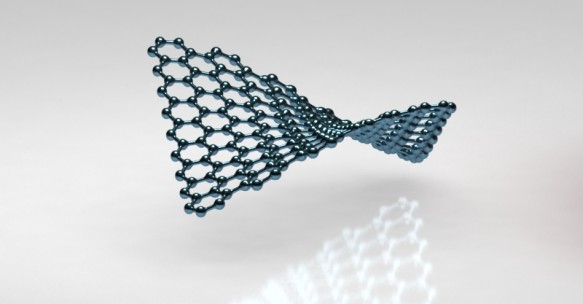
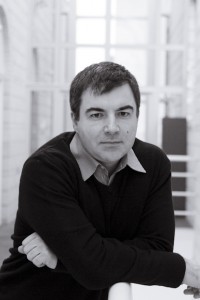
Professor Sir Kostya Novoselov
FET Flagship: Graphene
Co-winner of the European Commission’s Future and Emerging Technologies (FET) Flagship competition, Graphene, is to be a recipient of €1bn in funding over the next ten years, and aims to take graphene, a material made of a single layer of carbon atoms, which is stronger than diamond, yet lightweight and flexible, and related layered materials from academic laboratories to society, thereby revolutionising multiple industries and creating economic growth and new jobs in Europe.
Graphene was first discovered during groundbreaking experiments by Professors Kostya Novoselov and Andrew Geim, at the UK’s University of Manchester, some ten years ago, for which both scientists were awarded the Nobel Prize for Physics in 2010.
The Graphene flagship brings together an academic-industrial consortium aiming at a breakthrough for technological innovation. The research effort will cover the entire value chain from materials production to components and system integration and targets a number of specific goals that exploit the unique properties of graphene.
Products and applications
Fast electronic and optical devices, flexible electronics, functional lightweight components and advanced batteries are just some of the potential applications for what has been termed the ‘wonder material’, while examples of new products enabled by graphene technologies include fast, flexible and strong consumer electronics such as electronic paper and bendable personal communication devices, and lighter and more energy efficient airplanes. In the longer-term, graphene is expected to give rise to new computational paradigms and revolutionary medical applications such as artificial retinas.
With an initial 30-month-budget of €54m, the project will co-ordinate 126 academic and industrial research groups in 17 European countries, before extending the consortium with another 20-30 groups through an open call, issued soon after the start of the initiative, which will further strengthen the engineering aspects of the flagship.
Professor Geim commented on the future of the Graphene flagship: “No one can accurately predict what the future holds for us, but with so many potential technologies that have already been suggested for graphene, even statistically the chances are sky high that graphene will bring around some really important future technologies. Among everything I know, graphene is my best bet for the next big technological breakthrough. Nevertheless, one needs to remember that it takes typically 40 years for a new material to move from academia to consumer shelves. Graphene progresses unbelievably fast, having reached industrial labs already, but our expectation should remain realistic.”
The project is directed by Professor Jari Kinaret of Chalmers University of Technology, based in Gothenburg, Sweden, who will lead the research activities together with the leaders of the 15 work packages. The management team is supported by a Strategic Advisory Council that includes the European Nobel Laureates Sir Andre Geim (chairman), Albert Fert, Klaus von Klitzing and Sir Kostya Novoselov, industrial representatives from Nokia and Airbus, and two representatives of the global graphene research community.
Novoselov said: “The Graphene flagship funding is designed to strengthen European research in the area of novel materials and to build bridges between the best European scientists and industrialists. The hope is that the links that are to be developed within this project between the universities and the commercial companies will lead to many new innovations beyond the flagship.
“The University of Manchester has been at the forefront of graphene research for many years, thanks to the efforts of such brilliant scientists as Andre Geim, Irina Grigorieva, Sasha Grigorenko, Ian Kinloch and many others. However, the area of graphene and other 2D crystals has grown and widened dramatically, so we are happy to see hundreds of other university and industrial groups in Europe involved in this research. They bring unrivalled expertise to the story. It is great to see that the research which started and continues at The University of Manchester is now spreading across Europe.”
The Graphene flagship will now enter its 30-month ‘ramp-up’ phase, during which it will focus on the area of communications, concentrating on ICT and on the physical transport sector, and on supporting applications in the fields of energy technology and sensors. After this phase, the project will grow to full size and include many new groups and activities. The details of flagship implementation after the ramp-up phase are still open and form a part of the discussions on Horizon 2020, the EU’s next research and innovation Framework Programme.
Pan European Networks attended the European Commission’s announcement of the Future and Emerging Technologies flagship competition winners in Brussels in January 2013 and asked Professor Sir Kostya Novoselov for his thoughts on how the Graphene project will help Europe take the lead in terms of industrialisation and to make full use of graphene’s potential.
“In Europe, it is clear that there are certain problems concerning the transition from the brilliant science which occurs in academic laboratories through to industrial applications, and this is something that needs to be addressed. The flagship competition is one way to do this.
“We need to create from scratch those links that bridge the scientific research conducted at universities and the industrial laboratories within companies and pushing industrialists and scientists to work together in one overarching project such as Graphene is one of the possible ways through which this can certainly be achieved.
“While there are, nevertheless, many ways in which this can be implemented in practice, it is really down to each individual researcher as to how they will approach this, and, just as we have our model in Manchester, England, I am sure others will begin to emerge across Europe.”


